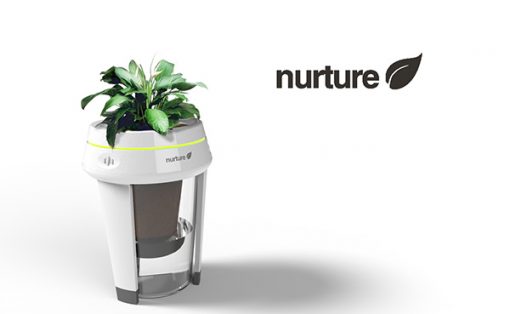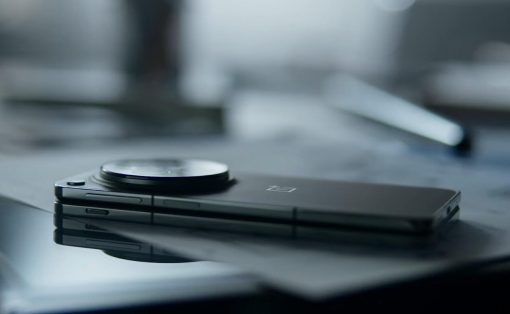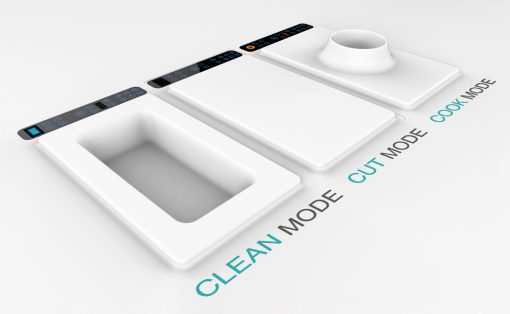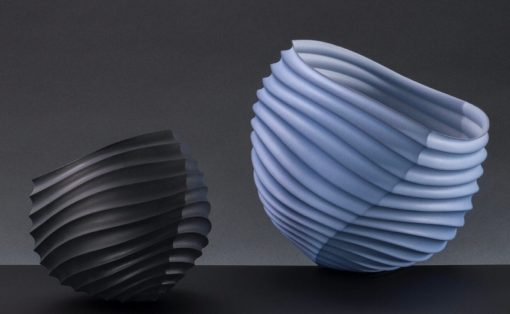We all know CFC and HFC’s damage the ozone layer, and it’s only a matter of time when HFC’s will be banned just like CFC’s were in 1996. But what our freezers? There’s been much debate regarding passive eco cooling and thermoelectric cooling – now Oceania, designed by Tez Patel brings both technologies together in his eco fridge design.
The top three tiers are separately cooled using magnetic refrigeration which can be turned on or off using a digital interface. The bottom section is passively cooled using water and ceramic materials, and can reach temperatures sufficient enough to store fruits, vegetables, and bread. The fridge is connected to the water main just like a washing machine, which allows water to enter and stored in a reservoir within the fridge, passively cooling the compartment. The water can then be reused or drained.
There are other eco-saving design elements too. The conventional large fridge door has been replaced with full extension drawers, reducing cold air loss when opened. The drawers also enable the user to reach at the back of the fridge with less muss and fuss. The clear front panels and the lazy susan at the top enables the user to browse before opening the drawer.
The digital interface is loaded with clever tricks. Using RFID technology, it informs the user what items are in the fridge, possible recipes, and your food’s sell by date. It also alarms the user when hot food is placed in the fridge, and automatically turns compartments off when not in use.
And to top this eco theme off, all materials are biodegradable or recyclable.
Designer: Tez Patel
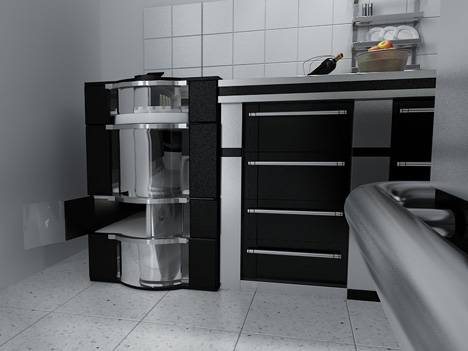
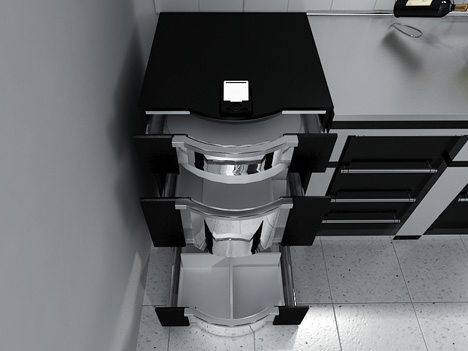
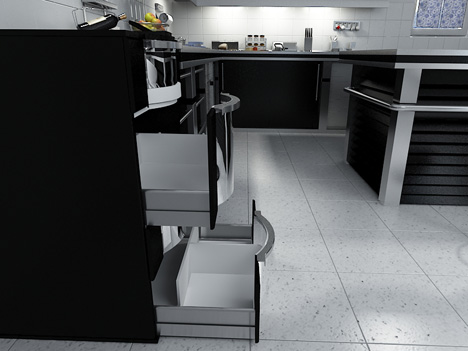
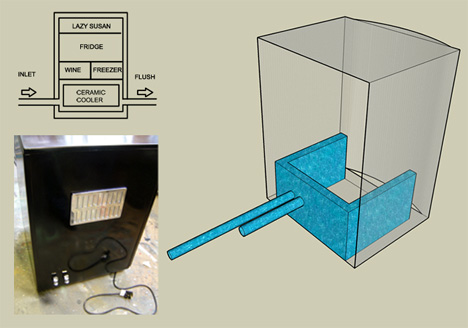
Water is used directly from the main pipe and is stored in a reservoir housed by ceramic insulation. This is able to cool the compartment to temperatures suitable for fruit and vegetables.
The water does not make any contact to unhygienic surfaces, which means it may be reused for domestic usage.
The process is similar to a boiler and a washine machine. The same pipe connections are used.



